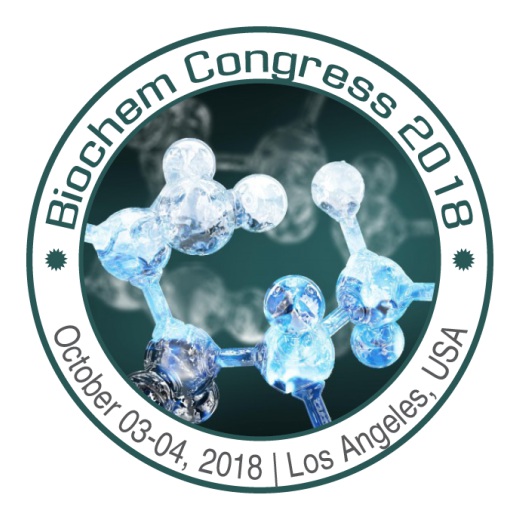Day 2 :
Location: Los Angeles
Session Introduction
Bill Shelander
CEO, Anven Biosciences, Inc., USA
Title: Identification of pathogenic antigen:antibody complexes of Alzheimer’s disease using “proxy antigensâ€

Biography:
Bill Shelander is a co-founder and CEO of Anven Bioscience. Previously he held an appointment at Lawrence Berkeley National Lab as a commercialization expert, building on a career focused on science and technology ventures. He has directed international funds with major investors from Japan, Taiwan, and the United States and continues to serve as an advisor for high tech enterprises. He earned a BS in Systems Engineering at Georgia Tech, an MSE in Chemical Engineering from West Virginia College of Graduate Studies, and an MBA from Stanford University. He also teaches innovation and entrepreneurship at Haas School of Business at UC Berkeley and at the Civil and Environmental Engineering Department of Stanford University.
Abstract:
Alzheimer’s disease (AD) is a progressive, neurodegenerative disease and believed by many to be associated with extracellular amyloid plaques and intracellular neurofibrillary tangles1, 2. Researchers have also long suspected that as neurodegeneration occurs in the brain, the immune response propagates disease-related antibodies in the blood, which will lastingly present in the serum of AD patients. However, despite enormous efforts through decades of research, no definitive early blood-based biomarker for AD has yet been validated3. A new approach involving “proxy antigens” provides profound new insights into the pathogenesis of Alzheimer’s disease. By isolating the pathogenic antigen:antibody complexes directly involved in the causation and progression of Alzheimer’s, a direct biomarker of the neurodegenerative disease can measure and monitor the subject’s immune response at the earliest stages of the disease.
Proxy antigens are biosimilar, but otherwise non-native, molecules that bind to antibodies in the hypervariable region with exquisite sensitivity and specificity4-7. Using this unprecedented capability, a systematic, step-by-step procedure first isolated the complexes unique to subjects exhibiting Alzheimer’s pathology (figure 1). Thereafter, the Alzheimer’s-specific proxy antigens provide a clear diagnostic tool to detect whether the Alzheimer’s complexes are present or absent in blood samples. One high value application of AD-specific proxy antigens can profile and stratify clinical trial populations, i.e. differentiate and predict which subjects would respond to a drug and which would not. For example, retrospective analysis of archived blood samples from a past clinical trial can be used to unambiguously reassess subgroups of subjects and offer an enriched population for a guided prospective clinical trial. Additionally, and perhaps most importantly, the identified Alzheimer’s complexes provide definitive targets for future therapeutic development.
Hailong An
Hebei University of Technology, Tianjin, China
Title: Identification of the calcium-dependent gating and targeted-drug discovery of CaCCs

Biography:
Professor Hailong An received his Ph.D. degree in Biophysics in Hebei University of Technology in 2005. After that, he was appointed to the faculty in Institute of Biophysics, Hebei University of Technology. From 2006 to 2008, he worked in Hebei Medical University under supervision by Prof. Hailin Zhang as a postdoc. Awarded by China Scholarship Council, he spent 20 months in Prof. Diomedes E. Logothetis’ Lab as a visiting scholar.
Professor Hailong An focuses on understanding the structure-function relationship of ion channels, the relationship between ion channels and major diseases and drug screening targeting at ion channels. More than 50 papers have been published in academic journals such as Scientific Reports, Journal of Biological Chemistry, British Journal of Pharmacology etc., and more than 40 papers were included in the SCI (total impact factor: 126.52), the paper was cited more than 200 times.
Abstract:
Calcium-activated chloride channels (CaCCs) play vital roles in a variety of physiological processes. Transmembrane protein 16A (TMEM16A) has been confirmed as the molecular counterpart of CaCCs which greatly pushes the molecular insights of CaCCs forward. However, the detailed mechanism of Ca2+ binding and activating the channel is still obscure. To identify the calcium binding site, the authors presented a computational approach which combined the fragment homology modeling with molecular dynamics simulation. Our data show that the first intracellular loop serves as a Ca2+ binding site including D439, E444 and E447. The experimental results indicate that a novel residue, E447, plays key role in Ca2+ binding. Compared with WT TMEM16A, E447Y produces a 30-fold increase in EC50 of Ca2+ activation and leads to a 100-fold increase in Ca2+ concentrations that is needed to fully activate the channel.
It is well established that TMEM16A is a drug target in many diseases, including cystic fibrosis, hypertension, asthma, and various tumors. Therefore, identifying potent and specific modulators of the TMEM16A channel is crucial. Here, the authors identified two modulators from the traditional Chinese medicine, an activator, Ginsenoside Rb1 (GRb1) which can increase the amplitude and frequency of contractions in an isolated guinea pig ileum assay in vivo and serve as a lead compound for the development of novel drugs for the treatment of diseases caused by TMEM16A dysfunction, an inhibitor, matrine which can dramatically inhibit the growth of lung adenocarcinoma tumors in xenografted mice, and may function as an anti-lung adenocarcinoma drug targeting at TMEM16 channels.
Chibuzo Carole Nweze
Nasarawa State University, Nigeria
Title: Hypoglycemic, Hepatoprotective and Hypolipidemic Effect of Pleurotusostreatus in Alloxan-Induced Hyperglycemic Rats

Biography:
Chibuzo Carole Nweze has her expertise in nutritional and Food Biochemistry. She has passion for indigenous functional foods and significant of the foods phytochemicals especially, their antioxidants related properties in scavenging free redicals in the cells. Her interest to look at these foods may improve the health of the middle class in the country, as most of them cannot afford to purchase most nutritionally important antioxidants that are costly for the low-income earners. Chibuzo is a senior lecturer in Nasarawa State University Keffi, Nigeria where she has been in academics for ten years. She has a PhD in Biochemistry from University of Jos, Nigeria, MSc from University of Lagos, Nigeria and Bachelor degree from Federal University of Technology Owerri, Nigeria.
Abstract:
Statement of problem: Diabetes mellitus is a metabolic disorder characterized with hyperglycemia and often associated with many complications in several organs most especially in liver and kidney. The purpose of this study is to evaluate effect of Pleurotusostreatus (Oyster mushroom) in Diabete mellitus and its complications. Methodology and theoretical orientation: Experimental diabetes were induced following an overnight fast, by a single intraperitoneal (i.p.) injection of Alloxan monohydrate at dose 150 mg/kg b.wt. to rats in group II to V. Control animals (group I ) were injected with 0.5ml of normal saline. Hyperglycemia was confirmed three days after injection by measuring the blood glucose level. The Diabetic rats were then fed with broiler feeds supplemented with dried Oyster mushroom powder at doses of 10 and 20g daily for a period of four weeks whereas the control animals were given only broiler feeds. Findings: The results show that intraperitoneal (i.p.) injection of Alloxan significantly (p<0.05) elevated blood glucose level accompanied by significantly (p<0.05) increase in serum Aspartate aminotransferase AST, Alanine aminotransferase ALT, Alkaline phosphatase ALP, hyperlidemia, sodium Na+, bicarbonate ion HCO3 , potassium K+ and with a concomitant significant (p<0.05) decrease in serum total protein , high density lipoprotein and chloride. Conclusion: Supplementation of dried oyster mushroom powder at doses of 10 and 20gdaily for a period of four weeks resulted in a reversal of the above pathological conditions associated with diabetes. Recommendation: Therefore, the study indicated that oyster mushroom besides its hypoglycemic and hypolipidemic effects could also protect the liver and kidney against impairment due to hyperglycemia.

